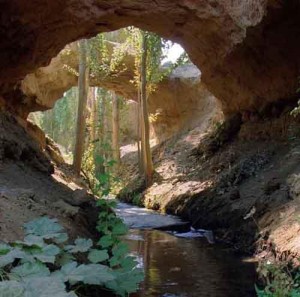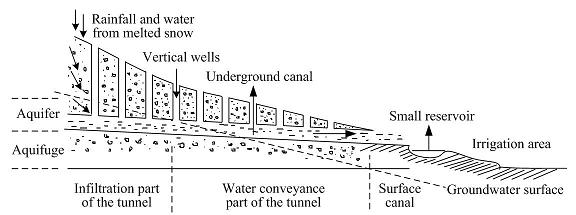 Karez Well systems reflect ancient people’s diligence and intelligence. At its peak, the karez irrigation system extended 5,000 km and was also referred to as ‘the underground Great Wall’.
Karez Well systems reflect ancient people’s diligence and intelligence. At its peak, the karez irrigation system extended 5,000 km and was also referred to as ‘the underground Great Wall’.
The Karez well was invented and built by ancient farmers from the various ethnic minorities of Turpan, This irrigation system uses gravity and the slope of the land to direct water flow into underground channels, thereby lessening the effects of evaporation under direct sunlight. The system comprises wells, underground drain channels, and collection wells (where the water reaches a certain level and runs into above ground irrigation channels).
In Xinjiang, the Karez wells are mostly located in Turpan, Hami and Mori and there is a large number of wells in Turpan Basin. The existing Karez wells were mostly built in the Qing Dynasty and millions of hectares of fields are still watered by them today.

There are altogether 1100-odd Karez wells and the channels have a total length of over 5000 kilometers in Turpan alone. Each of the well channels have different lengths: the longest can reach 20 kilometers while the shortest is only about 100 meters. The oldest Karez well is the Tuer Karez Well located in Zhuangzi village, Qiateka town, Turpan city, which has been used for over 470 years. It has a length of 3.5 kilometers and the daily water-injection rate can reach 20 m3. The most famous Karez well should be the Miyimu Aji Karez Well which is 5 kilometers long and has a depth of 80 meters, which has been used for over 200 years.

